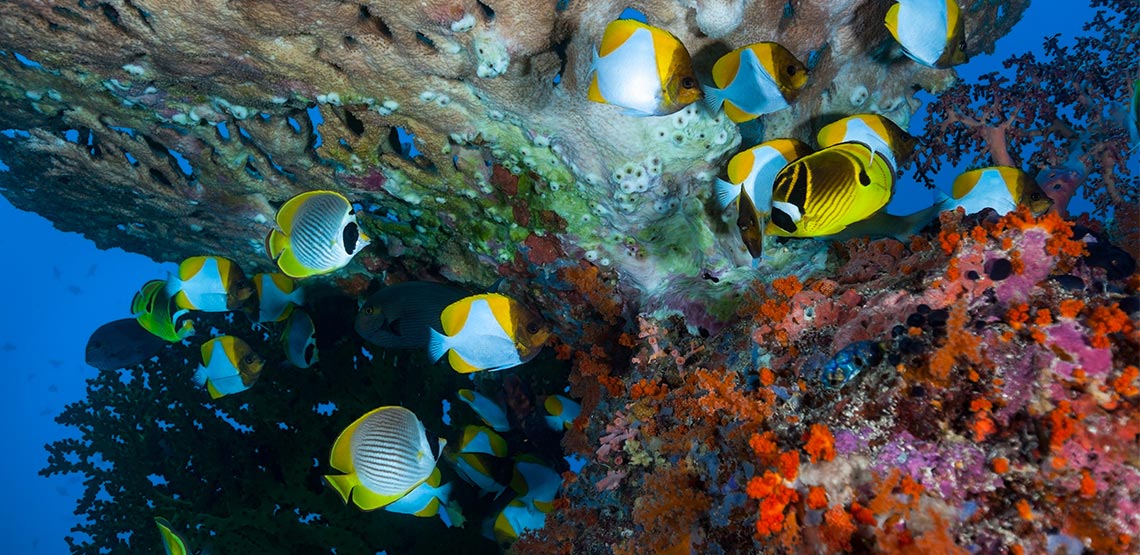A Complete Butterfly Fish Resource
Native to the reefs of the Indian Ocean and warmer zones in the Atlantic and Pacific oceans, the butterfly fish is a unique, disk-shaped swimmer. The butterfly fish banner also includes a number of unique subspecies, including the banner fish and the coral fish.
Appearance
Size: Most butterfly fish fall within a length range of 7 to 9 inches. The African butterfly fish is considerably smaller, though, averaging about 4 inches in length.
Color: While some species are dull in color, most butterfly fish display brilliant, rich scale coloration and patterning reminiscent of butterfly wings. Multicolored stripes and swirls cover the bodies of many butterfly fish species variants, adding bright splashes of blue, red, orange, black, white and yellow to the base color of the scales.
Variants: The long nose butterfly fish, so named for its protruding facial features, has a royal blue or blue-gray head and a bright, lemon yellow body with little or no striping or swirling on its scales.
Behavioral Characteristics
Noted for their strong social bonds, butterfly fish often form lifelong mating pairs or socialize in small, exclusive groups. Thus, aquarium hobbyists don't usually recommend keeping solitary fish. Pet owners should also be aware that butterfly fish have strong jumping instincts, so it's necessary to keep a tightly closed lid on your aquarium. If you have specific questions, draw on the expertise of a marine veterinarian or the proprietor of your local fish store for more information on salt water butterfly fish.
Related Search Topics (Ads):
Health and Care
Feeding: While they look like small angelfish, butterfly fish are harder to keep because of their specialized dietary requirements. They prefer live fish food, particularly small marine invertebrates, and also enjoy grazing on live algae. Depending on the disposition of your fish, they may or may not take to flaked foods.
Tank Care: Include some top-floating plants in your saltwater aquarium to make your butterfly fish feel more at home and reduce the stress they may experience in captivity. Note, though, that butterfly fish, particularly males, can be territorial and may pose problems for other small top-swimming fish in your aquarium. Provide water with a pH level of 6.0 to 7.0, and maintain a temperature in the range of 75 to 82 degrees Fahrenheit.
Health Concerns: Saltwater ich, technically known as cryptocaryon, seems to be a particular problem for butterfly fish. Ich is a parasitic infection that can strike domesticated fish, causing scale lesions, bleeding and listlessness. You should quarantine any sick fish immediately to prevent the spread of ich throughout the population in your aquarium. Butterfly fish also require higher than normal oxygen levels, so be sure to include some air stones in your tank, along with some powerheads to facilitate good water movement.
Life Expectancy: Fish lifespan can be difficult to predict, but you can generally expect your butterfly fish to live about five years.
